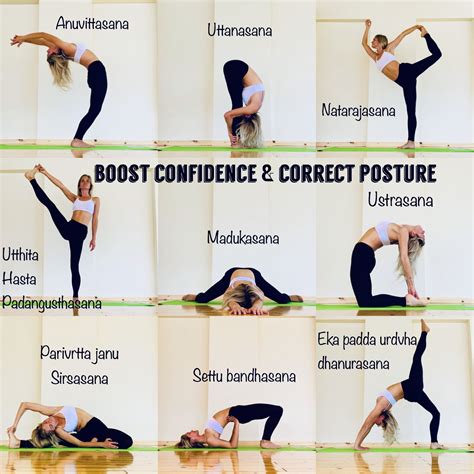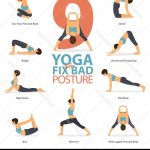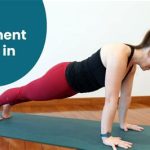How Yoga Can Transform Your Posture: A Comprehensive Guide
Maintaining good posture is crucial for overall health and well-being, yet many people struggle with poor alignment due to modern lifestyle factors like prolonged sitting, poor ergonomics, and lack of physical activity. Yoga, an ancient practice, has gained attention as a potential solution to these problems. But can yoga truly fix your posture? In this comprehensive guide, we will explore how different yoga techniques impact posture, the science behind it, and whether it’s the right solution for you.
Introduction: The Importance of Posture and the Role of Yoga
Posture affects not just your appearance but also your musculoskeletal health, digestion, circulation, and even mood. Yet, posture problems are widespread in the modern world due to desk jobs, poor body mechanics, and sedentary habits. The question arises: can yoga, with its holistic approach to body alignment and flexibility, correct these posture issues?
This article explores the potential of yoga to fix posture by examining key concepts, historical practices, current evidence, and real-world applications. Whether you’re a yoga novice or experienced practitioner, this guide provides an in-depth look into how yoga can reshape your body and improve your quality of life.
Key Concepts: Understanding Posture and Yoga’s Approach
Posture refers to the alignment of the spine and limbs in relation to gravity. When we speak of “good posture,” we mean a neutral spine position where the body’s natural curves are maintained. Poor posture can lead to muscle imbalances, joint strain, and chronic pain.
Yoga’s approach to posture focuses on enhancing body awareness, improving mobility, and correcting muscular imbalances. Through poses (asanas), breathing techniques (pranayama), and mindfulness, yoga seeks to bring the body back into proper alignment. Here are the main components:
- Asanas: Physical postures designed to improve strength, flexibility, and balance.
- Pranayama: Breathing techniques that promote relaxation and better posture through enhanced lung capacity.
- Mindfulness: Heightened awareness of the body’s position and movement in space, helping to maintain alignment.
Historical Context: Yoga’s Roots and Its Connection to Posture
Yoga’s focus on body alignment has been a part of its philosophy for thousands of years. Traditionally, yoga was seen as a spiritual practice aimed at achieving balance and harmony within the body and mind. While many ancient texts such as the Yoga Sutras of Patanjali briefly discuss postural alignment, modern yoga has placed increased emphasis on using postures to improve physical health, including spinal alignment.
Historically, yoga wasn’t designed specifically to fix posture in the sense we think of today, but the underlying principles of balance, alignment, and breath control have been used for centuries to promote physical well-being. Over time, with influences from anatomy and physical therapy, modern yoga has evolved to incorporate posture correction techniques.
Current State Analysis: The Science Behind Yoga and Posture Correction
Scientific research has increasingly shown that yoga can be effective in correcting posture-related issues. Studies suggest that yoga improves both static and dynamic posture by enhancing muscle strength and flexibility. Here are some of the scientific benefits:
| Benefit | Supporting Research | Mechanism |
|---|---|---|
| Increased Flexibility | 2016 study in International Journal of Yoga | Regular yoga practice increases the range of motion, allowing for better alignment. |
| Core Strengthening | 2019 study in Journal of Sports Science | Many yoga poses target the core, stabilizing the spine and improving posture. |
| Improved Balance | 2020 meta-analysis in Frontiers in Psychology | Yoga enhances proprioception, which helps in maintaining correct posture. |
| Reduced Back Pain | 2018 review in Spine | Yoga can alleviate tension in the muscles that contribute to poor posture. |
| Mindfulness and Body Awareness | 2017 study in Mindfulness Journal | Greater awareness of posture throughout the day leads to better alignment. |
Practical Applications: Yoga Poses That Improve Posture
Below are some specific yoga poses that directly target posture correction:
- Mountain Pose (Tadasana): Helps you find a neutral spine by teaching proper standing alignment.
- Cat-Cow Pose (Marjaryasana-Bitilasana): Stretches the spine and helps release tension, restoring the natural curves of the back.
- Downward Facing Dog (Adho Mukha Svanasana): Lengthens the spine and strengthens the muscles that support upright posture.
- Bridge Pose (Setu Bandhasana): Engages the core and lower back, improving stability and alignment.
- Plank Pose: Strengthens the core muscles that are essential for good posture.
Case Studies: Real-Life Examples of Yoga’s Impact on Posture
Let’s take a look at a few case studies that show how yoga helped improve posture in individuals with specific issues:
- Case 1: Desk Worker with Kyphosis
A 35-year-old desk worker with a slumped, rounded back posture (kyphosis) began a yoga program focusing on heart-opening postures like Cobra and Upward Facing Dog. After 12 weeks, her kyphosis improved significantly, and she reported less back pain. - Case 2: Senior Citizen with Scoliosis
A 70-year-old man with mild scoliosis used yoga poses like Triangle and Revolved Triangle to realign his spine and improve mobility. While his scoliosis wasn’t cured, his discomfort reduced, and his posture improved dramatically. - Case 3: Athlete with Muscular Imbalances
A 25-year-old runner with anterior pelvic tilt incorporated yoga poses like Pigeon and Low Lunge to stretch his hip flexors and hamstrings. After six months, his pelvis was more aligned, and his performance improved.
Stakeholder Analysis: Who Benefits from Yoga-Based Posture Correction?
Different stakeholders can benefit from yoga’s potential to improve posture, including:
- Office Workers: Reduces back pain and improves sitting posture, preventing long-term health issues.
- Athletes: Helps correct muscular imbalances that can lead to injury.
- Older Adults: Improves balance and mobility, reducing the risk of falls and injury.
- Healthcare Professionals: Can integrate yoga into physical therapy for posture correction.
Implementation Guidelines: Incorporating Yoga into Daily Life
For yoga to be effective in fixing posture, consistency is key. Here’s a step-by-step guide:
- Start Small: Begin with short sessions focusing on posture-correcting poses.
- Focus on Alignment: Use props like blocks or straps to help maintain proper alignment during poses.
- Integrate Mindfulness: Pay attention to how your body feels throughout the day, even outside of yoga practice.
- Build Core Strength: Incorporate core-building exercises to provide long-term support to your posture.
- Consult a Professional: For individuals with serious postural issues, working with a certified yoga therapist or instructor may be beneficial.
Ethical Considerations: Is Yoga a One-Size-Fits-All Solution?
It’s important to note that yoga isn’t a one-size-fits-all solution, and it may not be appropriate for everyone. Certain postural deformities, such as severe scoliosis or structural issues, may require medical intervention or physical therapy. Over-reliance on yoga without consulting a healthcare professional could potentially worsen some conditions. It’s crucial to approach yoga for posture correction mindfully and in conjunction with other forms of treatment when necessary.
Limitations and Future Research
While the research supporting yoga for posture correction is promising, there are still limitations. Most studies are short-term, and more longitudinal studies are needed to understand the long-term effects of yoga on posture. Additionally, while yoga can be an effective tool for improving alignment, it may not fully resolve all posture-related issues, particularly in individuals with structural spinal deformities.
Future research should focus on comparing yoga’s efficacy against other posture-correcting interventions, such as physical therapy or ergonomics training, and exploring how yoga can be customized to address specific postural conditions.
Expert Commentary: Yoga’s Place in Posture Improvement
Experts agree that yoga can be a valuable tool for posture improvement, but it’s not a magic bullet. According to Dr. Sarah Miller, a physical therapist specializing in yoga therapy, “Yoga is an excellent way to build body awareness and correct poor postural habits, but it works best when combined with other interventions like strength training and ergonomic adjustments.” Dr. Mark Johnson, an orthopedic specialist, adds, “For people with more severe structural issues, yoga can help, but it won’t replace the need for medical or surgical intervention.”








